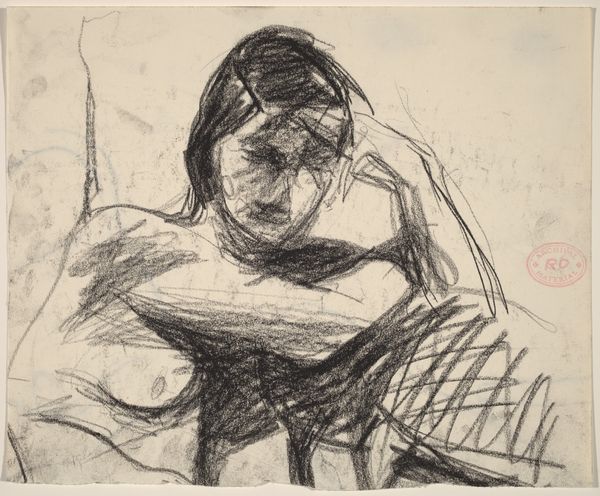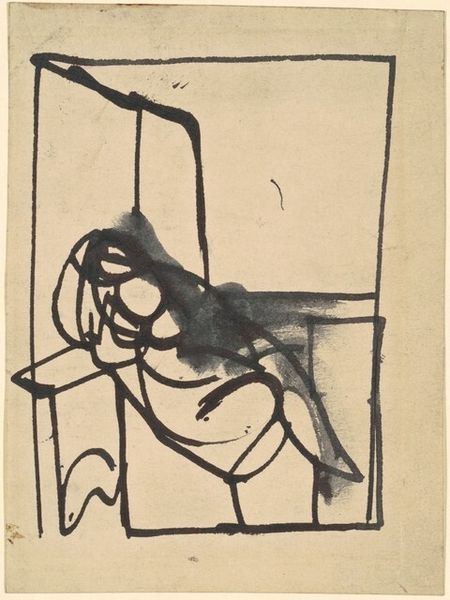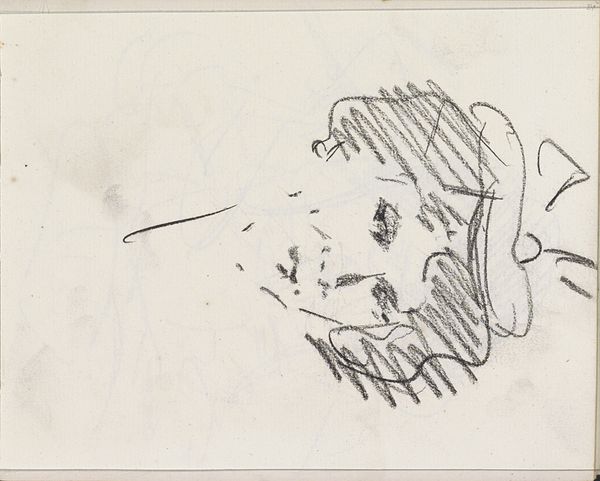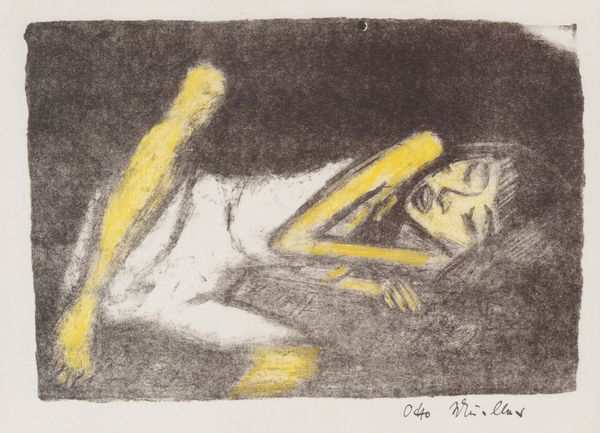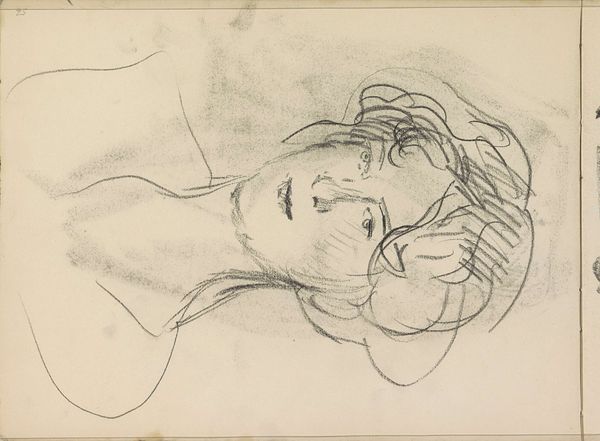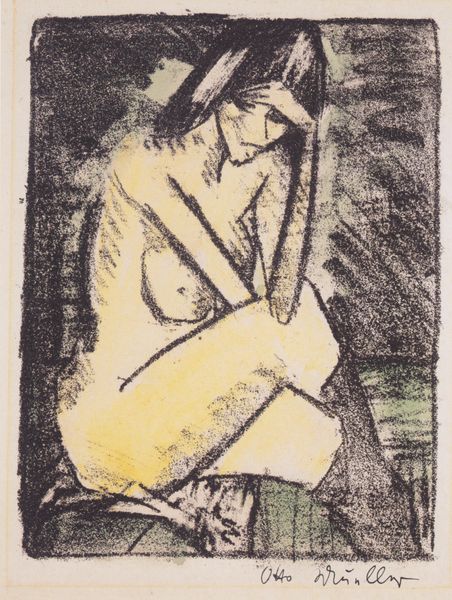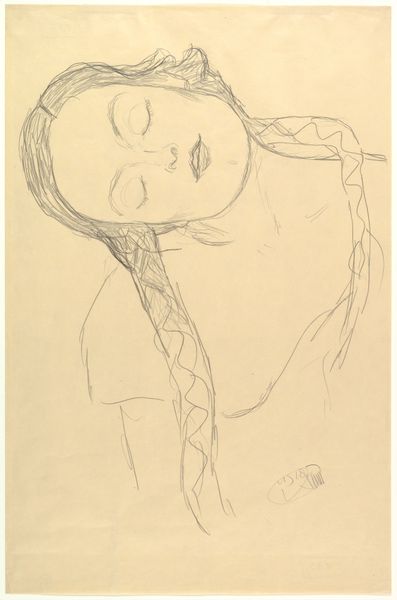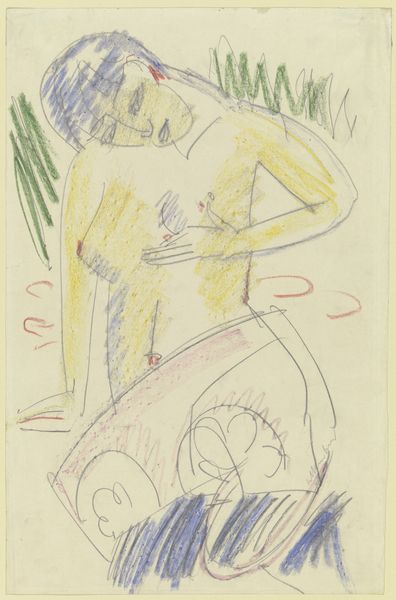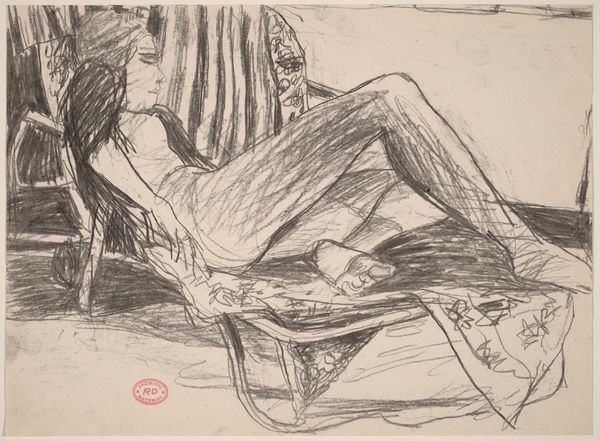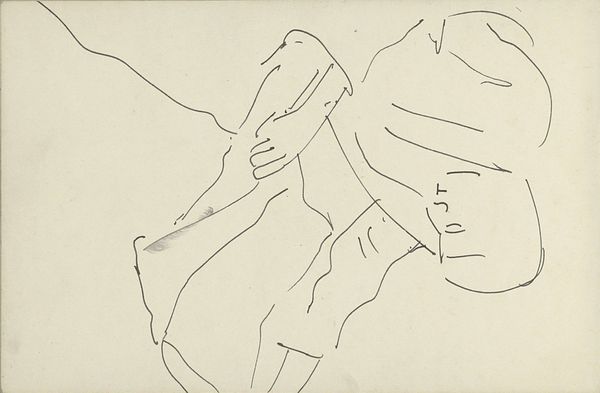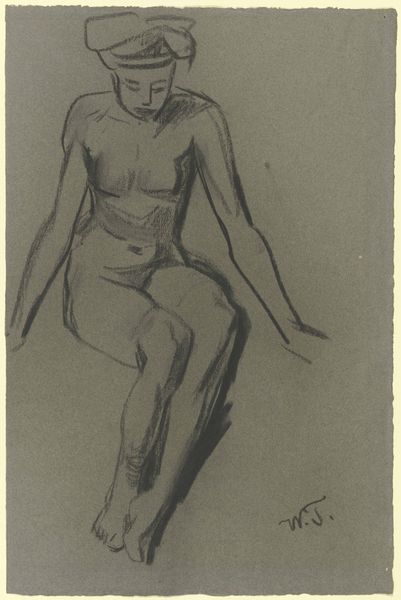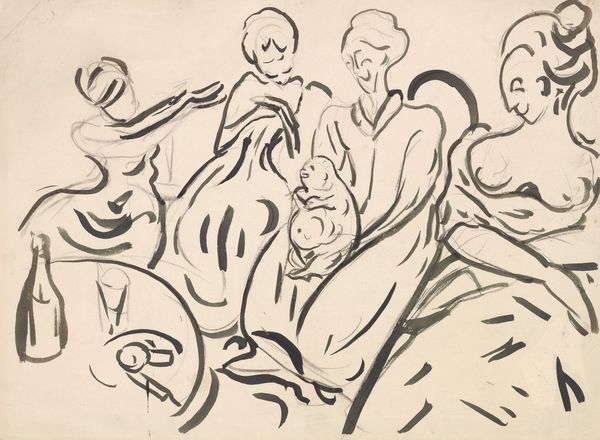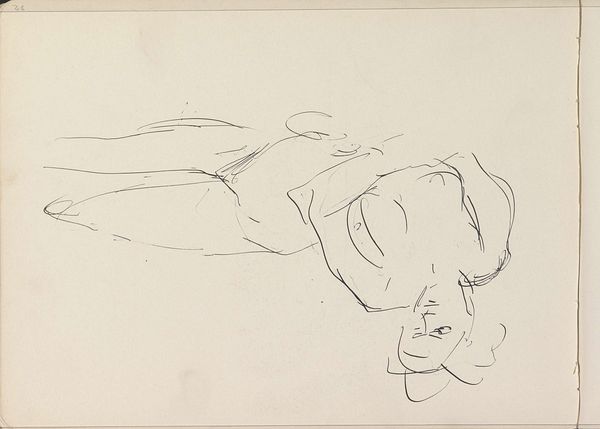
drawing, charcoal
#
portrait
#
drawing
#
ink drawing
#
figuration
#
expressionism
#
charcoal
#
nude
Dimensions: sheet: 21.2 x 30.3 cm (8 3/8 x 11 15/16 in.)
Copyright: National Gallery of Art: CC0 1.0
Editor: This drawing, "Fränzi Reclining," by Ernst Ludwig Kirchner, made around 1910 using charcoal and ink, strikes me with its almost haunting simplicity. What do you make of it? Curator: This seemingly simple drawing is incredibly powerful when viewed through a socio-political lens. Kirchner, as a leading figure in German Expressionism, was deeply engaged with the anxieties and societal shifts of pre-war Germany. Consider Fränzi, one of Kirchner’s favourite models, who was only about 12 years old at the time of this drawing. How do you feel about seeing such a young body depicted, especially knowing the historical context? Editor: It does feel uneasy, the raw lines make her vulnerability palpable. Is Kirchner then reflecting on societal issues by presenting her this way? Curator: Absolutely. Kirchner and other Expressionists often depicted figures, especially women, as vulnerable or distorted to reflect the alienation and moral decay they perceived in modern society. The loose charcoal strokes and stark lines contribute to this feeling of unease. There is a rejection of academic tradition, mirroring the avant-garde's challenge to the bourgeois values of the time. Editor: So, this isn't just a portrait; it's a statement on the social and political landscape? Curator: Precisely. Furthermore, think about the power dynamics at play: the artist, a grown man, depicting a child. The historical objectification of women is also at play in this portrait. These elements provoke us to consider the intersectional aspects of gender, age, and artistic representation, issues that remain strikingly relevant today. Editor: That's given me so much to think about! It's eye-opening to see how historical and societal issues intertwine with the artwork itself. Curator: Exactly! And that's how we start to have more layered conversations around not just art, but ourselves and our relationship to the past and present.
Comments
No comments
Be the first to comment and join the conversation on the ultimate creative platform.
